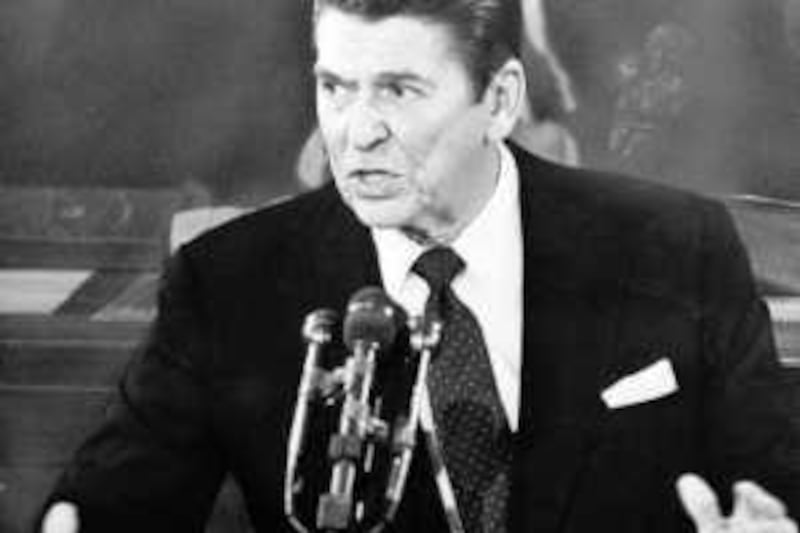"Inflation is as violent as a mugger, as frightening as an armed robber and as deadly as a hit man." The words of Ronald Reagan, who spent the first years of his US presidency battling the problem, may appear excessive, but you have to remember how pernicious it was during his time. US inflation peaked at 15 per cent in 1980, the year he took office. Some economists fear we are heading back to those dark days. The US Federal Reserve has set a trend among the world's leading central banks by printing money to fight recession and prevent a depression. Quantitative Easing (QE), as the process is now known, may well achieve that short-term goal - but at what long-term price?
Warren Buffett, the billionaire investor, appears certain there will be a cost to bear. In his opinion "we are certainly doing things that could lead to a lot of inflation. In economics, there is no free lunch". Marc Faber, who runs an investment company, is even more apocalyptic: "I am 100 per cent sure the US will go into hyperinflation." His latest mantra is: Buy a US$100 (Dh367) bond and frame it to teach your children about inflation by watching the US bond value diminish to almost nothing over the next 20 years.
This raises crucial questions for investors. Are they right? If so, when will inflation kick in? And most important, how do I build a portfolio to weather the inflationary storm? Not everyone agrees with the Buffett-Faber camp. Indeed, many economists argue that right now, deflation is the greater threat. We think that deflation is the greater short-term risk, while inflation - although not hyperinflation - is a moderate risk a year to 18 months down the line.
We are relatively relaxed about the risks of inflation, at least in the short term, partly because it is far from inevitable that money creation today will fuel rampant price rises tomorrow. The Fed and others are printing money because it is in short supply. The deleveraging that took place in the global financial system after Lehman Brothers collapsed effectively reduced the global money supply. This is an extreme, short-term phenomenon that policy makers have met with an extreme, short-term response. Ben Bernanke, the Fed chairman, and others have pledged to unwind quantitative easing as soon as the credit crunch eases. This won't be easy, but they are certainly aware of the issue.
Furthermore, we look closely at the mechanism by which printing money leads to inflation. The machine is broken. Central banks create the monetary base, which then balloons through the "multiplier effect" as commercial banks lend it on. Banks are not lending at anything like the required rate. Finally, we should look at the output gap theory of inflation. This suggests that if there is slack in the economy - workers without jobs, factories lying idle - prices will remain low. Only when the economy is running at full capacity or beyond will demand outstrip supply for televisions, chocolate bars and hotel rooms, sending prices soaring. In the US, unemployment is close to 10 per cent, while capacity utilisation is at just 69 per cent, a post-war low.
We believe inflationary pressures will begin to mount by next year, as the global economic recovery gathers momentum. Many companies have reduced their workforce, closed offices and factories, and trimmed inventories, which will put increasing pressure on supply when demand picks up. This could be particularly true in commodity markets. The rate of inflation depends to a large extent on the Fed, specifically when it decides to turn off the highly accommodative monetary policies employed today. This will not be easy, as a split is already emerging among senior Fed officials - the doves appear focused on fighting deflation and boosting economic growth, while others are already worrying about future inflation.
Take recent comments from two non-voting members of the federal open market committee, the Dallas Fed chairman Richard Plosser and the Boston Fed president Eric Rosengren. Mr Plosser was more hawkish, saying he was "cautious against complacency over inflation", while Mr Rosengren appeared more dovish, insisting that "between inflation and deflation, my concerns are currently more weighted toward deflation".
Much depends on which camp has its hand on the monetary spigot this time next year. Investors should watch this closely. Right now, we maintain our relatively defensive asset allocation. Over the next 12 months, we believe the main risks to the global economy are deflation and economic contraction or stagnation, and are positioning our investments accordingly. In practice, this means overweight investment grade corporate debt, and underweight equities and real estate.
However, we must be prepared to change that allocation when the circumstances change, particularly regarding inflation. If and when we feel that inflection point has been reached, investors will need to increase their exposure to equities, partly to benefit from the economic upturn and partly to hedge against inflation. They will also need to increase their exposure to commodities, and later in the cycle, to property. By contrast, they will probably reduce their exposure to corporate debt, which typically delivers poor relative returns in an inflationary environment.
Reagan's fear of inflation at that time was understandable, given the market experience of the late 1970s and early 1980s. And while, as investors, we must remain vigilant against its re-emergence, we must also put those fears in perspective. Reagan and his then Fed chairman, Paul Volker, did an excellent crime-fighting job. The muggers, armed robbers and hit men that he referred to in that famous quote have been sighted only rarely in the world's major economies over the past three decades. Today, we have other villains to face.
Sean Daykin, is the head of investment funds at Emirates Investment Services





